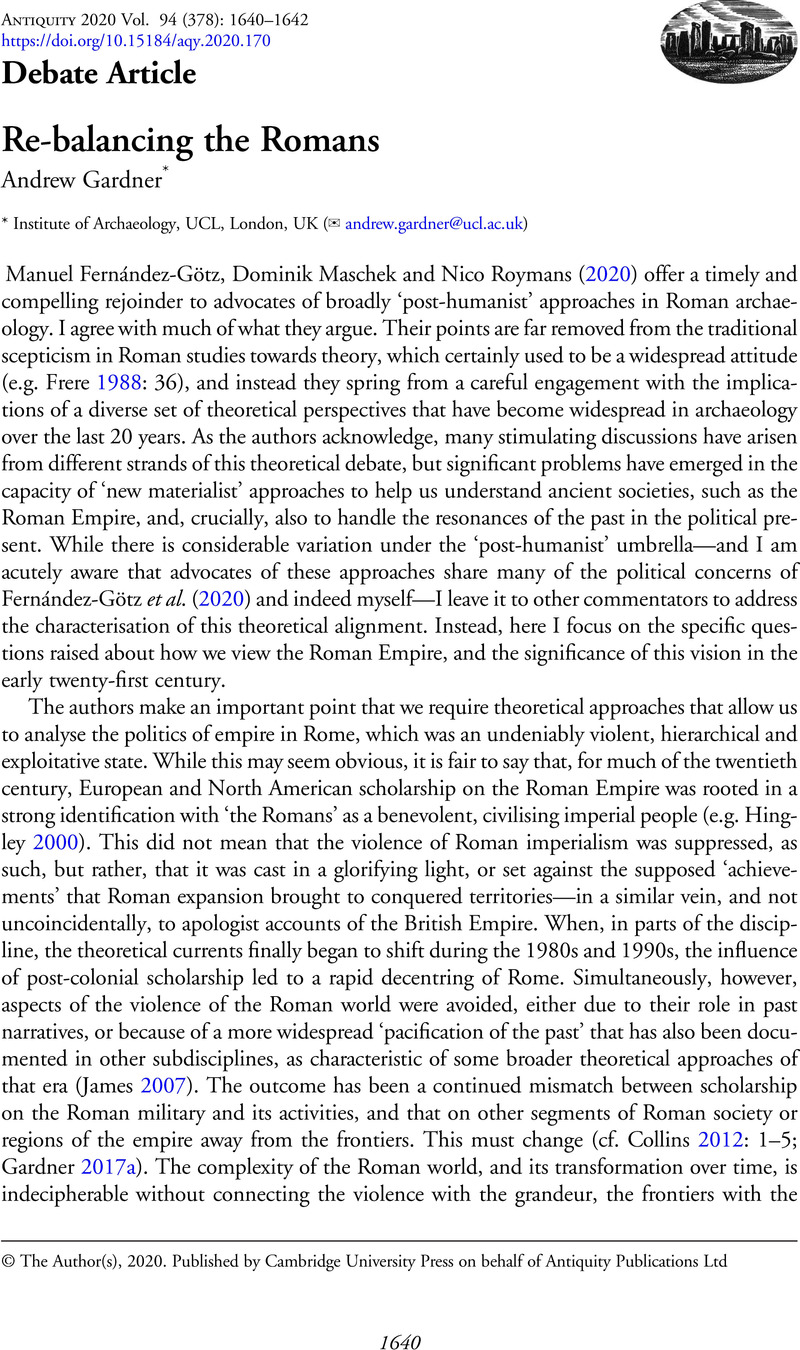Crossref Citations
This article has been cited by the following publications. This list is generated based on data provided by Crossref.
Fernández-Götz, Manuel
Maschek, Dominik
and
Roymans, Nico
2020.
Power, asymmetries and how to view the Roman world.
Antiquity,
Vol. 94,
Issue. 378,
p.
1653.
Baryshinkov, Anton
2022.
New Threats, Old Challenges: Understanding Roman Imperialism in Post-Soviet Russia.
Theoretical Roman Archaeology Journal,
Vol. 5,
Issue. 1,
Givens, William
2024.
'All this in their ignorance they called civilisation': Analysing the Relationship between Nationalism and the Display of Roman Archaeology in Britain's National Museums.
Internet Archaeology,
Fernández-Götz, Manuel
and
Roymans, Nico
2024.
Archaeology of the Roman Conquest.


